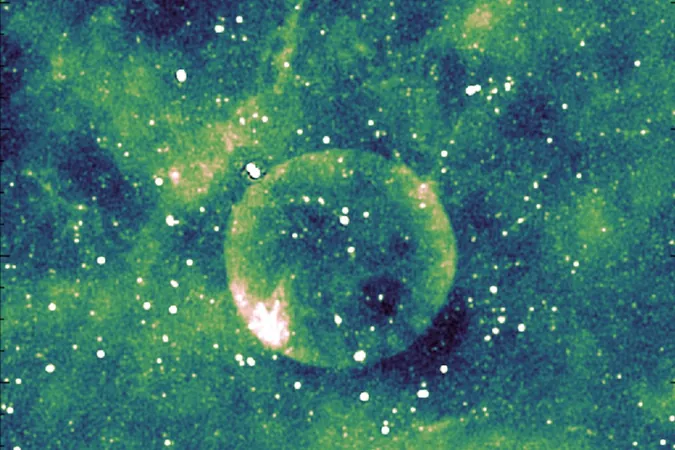
Astronomers Stunned by Perfectly Spherical Mystery Object in Space!
2025-06-16
Author: Wai
An Astounding Discovery in Our Galaxy!
Astronomers are scratching their heads in disbelief as they unveil a cosmic enigma: a celestial object astonishingly shaped like a perfect sphere, discovered by the Australian SKA Pathfinder Telescope (ASKAP). This groundbreaking find is unlike anything the scientific community has ever encountered!
Meet Teleios: The Cosmic Bubble of Perfection
Named Teleios—a Greek word meaning 'perfection'—this peculiar bubble of plasma is located somewhere in our very own Milky Way. But here’s the twist: it only becomes visible in the radio spectrum, remaining completely elusive to visible light, X-rays, or infrared. This trait adds an extra layer of intrigue, as such spherical formations are exceptionally rare!
Why Is Teleios So Unique?
Typically, remnants of supernovae appear as uneven, irregular shapes due to the chaotic nature of stellar explosions. Yet, Teleios stands out with a nearly perfect roundness, reportedly more than 95%. This phenomenon has led researchers to classify it as the first 'perfect radio circle' observed in our galaxy!
The Mystery Deepens: Distance and Age Estimates
However, studying Teleios is no walk in the park. Its faint signature complicates matters—scientists are stuck debating whether it's about 2,200 light-years away or a whopping 7,700 light-years distant! Also, they are torn between two age hypotheses: is Teleios a youthful supernova remnant aged less than 1,000 years or an ancient one over 10,000 years old?
Theories Abound, But Certainty Eludes
One prevailing theory suggests that Teleios could be the aftermath of a 'Type Ia supernova': an explosion of a white dwarf in a stark, open space. Yet, the scientific report from May 7 reveals that the evidence isn't conclusive, leaving many unanswered questions. As the article states: 'Unfortunately, all examined scenarios face challenges, and no definitive origin of this supernova can be confirmed at this stage.'
No X-ray Emission and Missing Neutron Cores!
Adding to the mystery, Teleios doesn’t emit X-rays, which is an expected signature of a supernova remnant, and there are no traces of a neutron star or black hole left behind—typical remnants of massive stellar explosions. Moreover, the lack of historical accounts of a supernova in that region raises eyebrows, leading researchers to ponder whether we missed a monumental cosmic event.
What's Next for Astronomers?
As scientists dive deeper into this perplexing cosmic puzzle, the upcoming Square Kilometre Array—a new radio telescope set to launch in Australia—promises to shed more light on Teleios, potentially unraveling the mysteries of the universe one discovery at a time!





 Brasil (PT)
Brasil (PT)
 Canada (EN)
Canada (EN)
 Chile (ES)
Chile (ES)
 Česko (CS)
Česko (CS)
 대한민국 (KO)
대한민국 (KO)
 España (ES)
España (ES)
 France (FR)
France (FR)
 Hong Kong (EN)
Hong Kong (EN)
 Italia (IT)
Italia (IT)
 日本 (JA)
日本 (JA)
 Magyarország (HU)
Magyarország (HU)
 Norge (NO)
Norge (NO)
 Polska (PL)
Polska (PL)
 Schweiz (DE)
Schweiz (DE)
 Singapore (EN)
Singapore (EN)
 Sverige (SV)
Sverige (SV)
 Suomi (FI)
Suomi (FI)
 Türkiye (TR)
Türkiye (TR)
 الإمارات العربية المتحدة (AR)
الإمارات العربية المتحدة (AR)